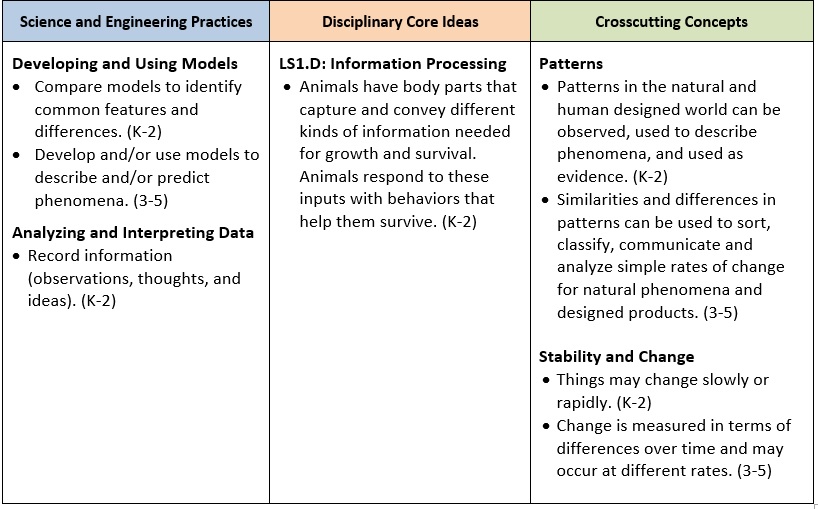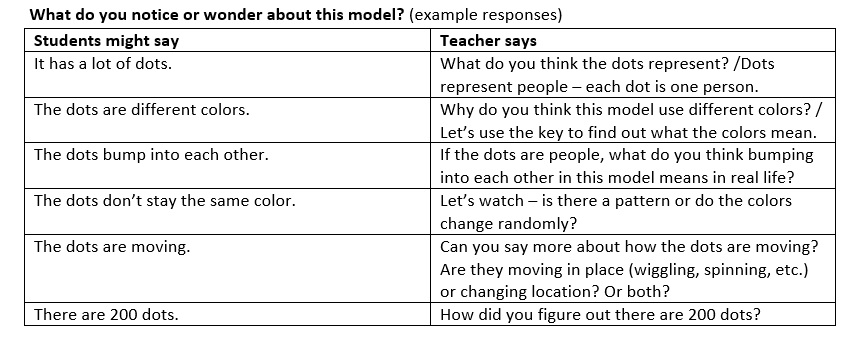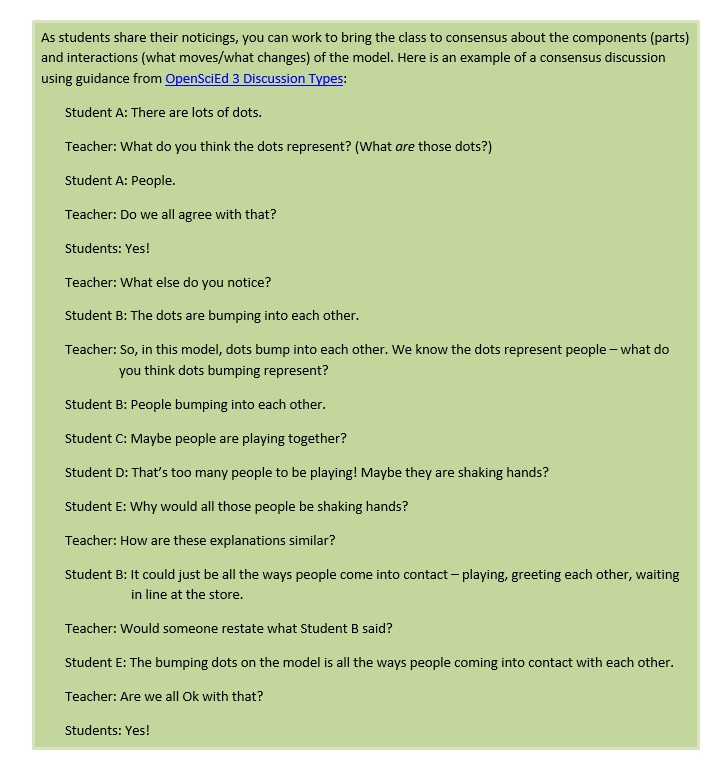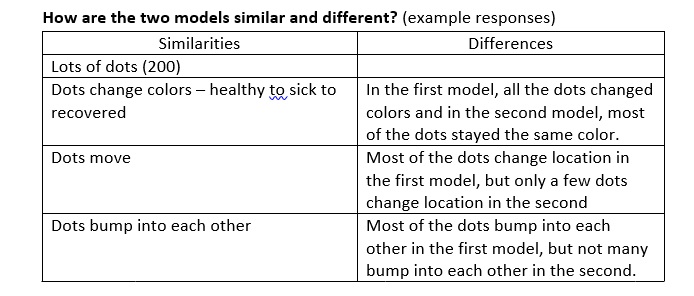Coronavirus Lesson for Elementary Students
By Korei Martin
Posted on 2020-03-18
Author:
The COVID-19 global pandemic has led to major changes in our everyday lives, a situation that can be scary for both young people and adults. Understanding helps alleviate fear. This coronavirus lesson was designed to help young children talk about changes they have seen and heard about, learn the real story of how the coronavirus is spread, and take actions to protect themselves and their families.
This lesson is written in four parts; each part can be taught on its own. Because this lesson is written for K-5 students, you may find that the activities need more or fewer scaffolds depending on the grade-level you teach.

Materials (http://bit.ly/K-5CoronavirusLesson)
Coronavirus Elementary Lesson PowerPoint Presentation
Which Way Stops Germs from Spreading? (Handout)
Task 1. Changes We’re Noticing
Students are noticing changes in their everyday lives that they may not have had an opportunity to talk about with their peers or adults in their lives.
Begin the conversation by sharing changes you have noticed – people in masks, strange greetings, empty shelves at grocery stores and lost of people cleaning. (You might substitute the pictures on Slide 2 with similar pictures taken in your area.)
Next, give your students an opportunity to share what they’ve seen and heard about changes caused by the spread of the coronavirus.
- Ask students to turn and talk with a partner. Partner conversation supports are provided on Slide 3. You’ll notice the Responder sentence stem “I heard you say _____.” throughout the lesson; this is to ensure the speaker’s thinking is honored.
- As a whole group, ask students to share their noticings or something their partner noticed. Record the students’ noticings and/or questions placing them into one of three (or four) categories (see Slide 4)
- What is the coronavirus?
- How do we protect ourselves and others?
- When will things be normal again?
- (Other)
You may want students to look for the pattern in the way you’ve organized questions, and then use that pattern to collaboratively label the categories.
Use the category “What is the coronavirus?” to navigate to the next task.
Task 2. What is the coronavirus?
Students may want to know more about the coronavirus – what it is and how it spreads.
You may start by asking students if they’ve ever had a cold or the flu. How did it make them feel? How long did it take them to feel better?
What is the coronavirus? Share the idea that colds, flu and coronavirus are caused by germs, tiny living things that invade our body and makes us sick. Germs are too small to see with your eyes or even a magnifying glass, but they can be seen using a microscope. (Slide 6)
Based on student questions from the first task, you may need to share some or all of the following information with your students:
- COVID-19 is the short name for “coronavirus disease 2019.” It is a new virus [germ]. Doctors and scientists are still learning about it.
- Recently, this virus has made a lot of people sick. Scientists and doctors think that most people will be ok, especially kids, but some people might get pretty sick.
- Doctors and health experts are working hard to help people stay healthy.
- Symptoms: COVID-19 can look different in different people. For many people, being sick with COVID-19 would be a little bit like having the flu. People can get a fever, cough, or have a hard time taking deep breaths.
- Most people who have gotten COVID-19 have not gotten very sick. Only a small group of people who get it have had more serious problems. From what doctors have seen so far, most children don’t seem to get very sick. While a lot of adults get sick, most adults get better. If you do get sick, it doesn’t mean you have COVID-19. People can get sick from all kinds of germs. What’s important to remember is that if you do get sick, the adults at home and school will help get you any help that you need.
Source: https://www.cdc.gov/coronavirus/2019-ncov/community/schools-childcare/talking-with-children.html
Before moving on to the next slide, make sure you let students know that not all germs make you sick. Some germs are even good for us like the ones in our digestive systems that help us get nutrients from the food we eat. (Yogurt has germs that can help keep our digestive system healthy!)
How are germs spread? Ask students how they think germs are spread (shared with other people). Take all ideas.
Watch The Story of a Germ from Sid the Science Kid (https://www.youtube.com/watch?v=b09luE7z2qY). Stop the video when the cartoon virus appears to remind students that germs are too small to see with your eyes. You might ask students, “Why do you think they drew the germ so big?” (The cartoon shows us the location of the germ which is too small to see.) “Do germs have eyes, mouths, and arms?” (Students might not know the answer; you may want to show them a real picture of a germ like this one found here: https://www.cdc.gov/media/subtopic/images.htm). You may also ask, “Why do you think the germ is shown reading a book? (carrying that stick?) What do you think the person who made this model is trying to tell us about the germ?” Finish watching the video.
Slide 8 offers some questions for reviewing the video. “How do you think germs on our hands get into our eyes, nose, and mouth where they can make us sick?” is suggested because it creates an opportunity to share with students touching our faces causes germs from our hands to get into our eyes, nose, and mouth which can make us sick.
Use the last question, “How can we get germs off our hands?” to navigate to the next task.
Task 3. How do we protect ourselves and others from getting sick?
Handwashing. Your students (and their families) might say they already know how to wash their hands, but recent studies show that over 95% of adults don’t wash their hands correctly! These studies were conducted in the United States, but the lack of proper handwashing world-wide led the creation of Global Handwashing Day (observed every year on October 15) in 2008. The goal of Global Handwashing Day is to increase awareness and understanding about the importance of handwashing with soap as an effective and affordable way to prevent diseases and save lives. (https://globalhandwashing.org/global-handwashing-day/)
Reporting of recent handwashing studies:
https://www.theatlantic.com/health/archive/2013/06/study-95-of-people-dont-wash-their-hands-correctly/276720/
https://www.usatoday.com/story/news/nation-now/2018/06/29/usda-study-most-people-dont-wash-their-hands-correctly/745048002/
If your students tell you they already know how to wash their hands, ask if they would learn the song with hand motions to teach others (young children AND adults) how to wash their hands the right way. This empowers young people to take action in their families and communities to keep people safe.
Watch Raya and Elmo wash their hands (http://bit.ly/ElmoHandwashing) The song they sing teaches young children to wash the front and back of their hands and in between their fingers. The length of the song is 20 seconds – the recommended amount of time for handwashing. Ask students to use hand motions while singing the song so you can ensure they are washing the back of their hands and in between fingers.
Sneezing and Coughing Etiquette. Show students the picture on Slide 12. Ask students what they think is happening. You may give students 1-3 minutes to write their ideas before turning and talking with a partner. The partner conversation supports on Slide 13 are slightly different than the ones on Slide 3. Both the Speaker and Responder should support their ideas with evidence from the picture (which may be connected to evidence from their own experiences). You can support the conversations by asking students, “Can you point to the place on the picture that makes you say that?” Reveal or confirm the picture is a sneeze.
Which way stops germs from spreading? The Which Way Stops Germs from Spreading? A formative assessment probe is an opportunity for students to put their ideas about the coronavirus (germs) together. Ask students to circle the ways people can stop germs from spreading (alternatively ask students to cross out ways that won’t stop germs from spreading). Ask students to share their thinking on the back of the probe handout. Students may use words, drawings, and symbols to represent their ideas.
- If students choose A and D, share that doctors and scientists agree that sneezing into a tissue or elbow can help stop germs from spreading.
- If student choose B,
- look carefully at their thinking. Does it include washing their hands after sneezing into them? If this is the case, ask students what would happen if they didn’t have any soap and water (or hand sanitizer).
- Does their thinking only include stopping or catching the sneeze? Ask students what might happen next. (Alternatively, ask students what they might do if someone wanted to shake their hand or hug them after they sneezed). This may lead students to consider another choice.
- If students choose C,
- show them this video of a sneeze https://www.smithsonianmag.com/smart-news/slo-mo-video-shows-just-how-big-sneeze-clouds-can-get-180960257/ and compare the video to the picture of the sneeze. What happens when you don’t cover your mouth when you sneeze?
What are the ways we greet people? Many of the ways we greet people involve direct contact – hugging, kissing, and shaking hands to name a few. The elbow bump has become popular, but since people are sneezing and coughing into their elbows the CDC recommends this practice stops. Even the foot bump (see Slide 1) is out because it brings people too close together.
Ask students to think about all the different ways they greet people (say hello, goodbye, or I love you) with and without speaking.
- Ask students to first think about greetings by themselves – we refer to this individual thinking time as the Alone Zone – and to write each greeting idea on a separate sticky note, index card or strip of paper (whatever you have available).
- Move students into small groups. Ask student to share their greeting ideas with each other. After all ideas have been shared, tell students to put all of the greetings people could use to keep germs from spreading into a pile. Then ask each group to be ready to share what all of the greetings in the pile have in common with the whole class.
- Transition students to a whole-class discussion. Ask groups to share what greetings in their won’t-spread-germs piles have in common (greetings made without touching, greetings made from a distance, etc.). Make sure students understand we only need greetings in the won’t-spread-germs pile when people in their family or community are sick.
Task 4. When will things be normal again?
Note: This task is built around the practice of Developing and Using Models and student discourse. You may want to first introduce or remind students of classroom norms before engaging in this task. OpenSciEd (openscied.org) has a set of classroom norms that well-support students in sharing ideas.
In Task 1, students may have shared the noticing that they can’t play, hang out or learn together. (They may also have heard the term “social distancing”.) In this task, students will use models (https://www.washingtonpost.com/graphics/2020/world/corona-simulator/) to figure out why they have to stay near home.
Share the first model with students (first model on the webpage). Ask students, “What do you notice or wonder about this model?” (Start with the simulation off, then let it play for a few seconds while students are making observations.)


Tell the students, “We’re going to watch what happens when an imaginary germ spreads in a town of 200 people who are playing, hanging out and learning together.” Play the simulation two or three times. Ask students what pattern(s) they noticed (people start healthy, everyone gets sick, and then everyone recovers).
Share the last model on the webpage (one of every eight people move). Tell students, “Now we’re going to watch what happens when the imaginary germ spreads in a town of 200 people who are mostly staying at home. Scientists call keeping close to home social distancing.”
Ask the student how this model is similar to the first model (start with the simulation off, then let it play through while students are making observations). Record the similarities. Play the simulation again, this time asking students to notice differences between the first and second models. Record the differences students observe. You may need to run the simulation 2-3 times.

Ask students to turn and talk to a partner to answer the question, “How do these models help explain why scientists are asking us not to play, hang out, or learn together?” Share the partner conversational supports on Slide 24 with students. As you listen to partner conversation, remind students to use the models and the similarities and differences list (evidence) to support their thinking.
Bring the class together for a building understanding discussion. Start by asking students to share their claims. As each student shares their claim, ask them to share evidence from the models that support their claim.
Some questions you might pose to the class to encourage critique and student-to-student interaction include:
- Does any group have evidence to support Group A’s claim?
- What data do we have that challenges Group B’s claim?
- ______ and ____ made similar claims. Did you have the same evidence?
- ______, what do you have to say to _____ about her idea? It sounds pretty different from yours.
To conclude the building understanding discussion, consider using the following prompt:
- What can we conclude about how these models help explain why scientists are asking us not to play, hang out, or learn together?
(See additional guidance from OpenSciEd 3 Discussion Types)
Continue to look for patterns in the rate of spreading and locations of new cases to gather additional evidence to support the claim that social distancing slows the spread of coronavirus through communities and decreases the number of new infections (https://www.nytimes.com/interactive/2020/us/coronavirus-us-cases.html).
Disclaimer: The views expressed in this blog post are those of the author(s) and do not necessarily reflect the official position of the National Science Teaching Association (NSTA).


